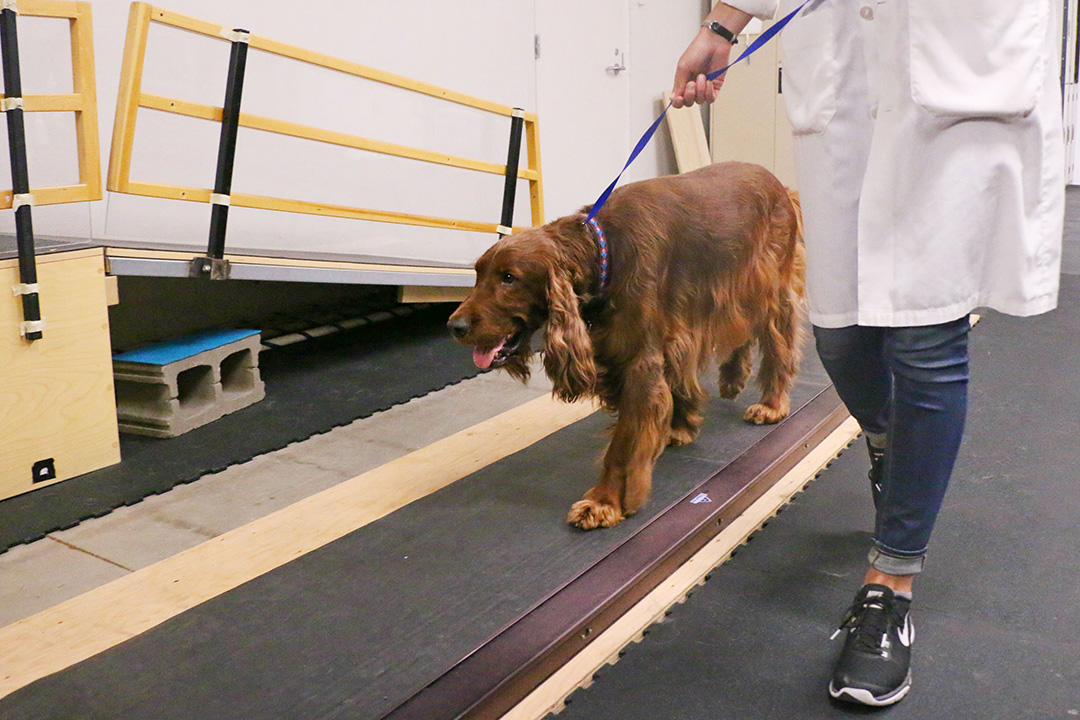
Ramp walking helps diagnose lameness in dogs
Researchers at the University of Saskatchewan’s Western College of Veterinary Medicine (WCVM) are taking tips from the field of human medicine and rehabilitation to develop a technique to help detect and diagnose injuries in dogs.
By EMMA THOMSONGait analysis, pressure walkways, and angled walking are popular techniques used in human medicine. Their use has improved prosthetics, rehabilitation, medicine and more. But, while this research has a long history in human diagnostics, it is relatively new in veterinary medicine.
Dr. Romany Pinto, a clinical associate in rehabilitation at the WCVM hopes similar research in dogs will lead to a non-invasive, quick, and easy technique that aids in diagnosing lameness in dogs. In 2017, she noticed that some dogs with muscle-strain injuries did not limp nor otherwise show lameness on flat surfaces, but were visibly lame when they walked across a ramp.
“This led me to start a research study that would investigate what happens when healthy dogs and dogs with hind-limb injuries walk up and down [a] ramp,” she says. She proposes that walking dogs on an incline and decline exaggerates subtle injuries that cause lameness, making the injuries easier to detect and diagnose.
According to Dr. Gillian Muir, department head of Veterinary Medical Bioscience at the college and a leader on this project, the key to the study is “to figure out what changes in their gait cycle when a dog walks on the ramp make the lameness more visible compared to [on] the flat surface.”
Dr. Pinto says, “We want to use this study to understand why those dogs that do not show any lameness on the flat surface are visibly lame on the decline.”
The study is designed to get at the mechanisms underlying the gait patterns, specifically focusing on stance time (the amount of time the limb is on the ground as a proportion of stride time), stride length (the length each limb moves in a stride), and limb force of healthy and lame dogs to increase the precision and accuracy of the diagnoses of subtle injuries that can cause dogs to become lame.

